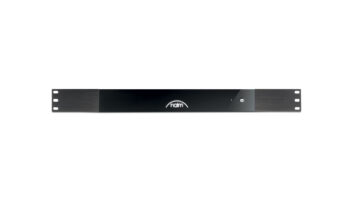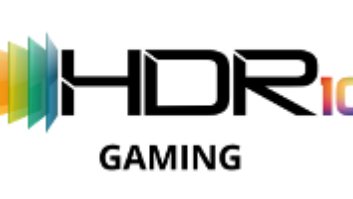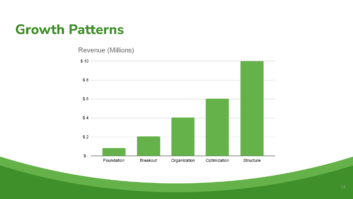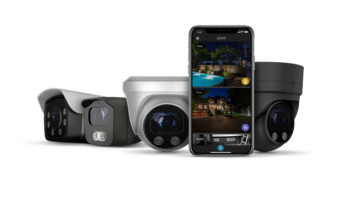
Since the first E3 convention in 1995, when it was officially known as the Electronic Entertainment Expo, the event has become the leading worldwide event for the global video game industry. As the broader consumer and retail market have moved from primitive consoles to PC gaming, high-powered, 4K-capable games and consoles, virtual reality (VR) and mobile-centric games, the announcements made and products shown there affect the broader consumer electronics ecosystem.
Some years there is a focus on new hardware. Sometimes it is software/content-centric. Driven in large part by the products from Microsoft’s Xbox, Sony’s PlayStation, and the various Nintendo platforms, this year’s E3 was a mix of both sides of the product fence. While Xbox made a big hardware splash, PlayStation and Nintendo were focused on game titles.
On the hardware front, E3 saw the formal introduction of the new Xbox One X. Hinted at as far back as last year’s E3 as “Project Scorpio,” the go-to-market name is a logical extension of the current series while the goodwill of a year’s worth of publicity for the code name is being capitalized by occasionally using the name to describe the graphics engine.

The crowd at this year’s Xbox briefing was expecting news of a new console…and it got it.Delivering on the promise of UHD, Xbox One X now matches PlayStation4 Pro with the ability to not just upscale content to 4K, but with the ability to render 4K titles directly. Backing that up, Microsoft announced a wide range of both Xbox-exclusive and third-party 4K titles. In addition, “Xbox One Enhanced” versions of existing, popular titles such as Minecraft and Final Fantasy 15 will be released to take advantage of the new model’s power.
With respect to where Xbox One X fits into the broader home entertainment picture, it offers 60Hz playback, HDR10, Wide Color Gamut, and both Dolby Atmos and DTS:X capability, as did the Xbox One S. Also retained is the Ultra HD Blu-ray player, one feature that the competitive PlayStation4 Pro lacks. Streaming content—such as Netflix—also can be played back in 4K. Notably lacking from both UHD consoles is Dolby Vision, but Xbox executives hinted that if the demand warrants, it could be added as an upgrade.
From an installation and connectivity standpoint, the new Xbox One derivative is a little bit smaller. More interestingly, the use of an advanced cooling system allowed industrial designers to eliminate the top vents on the previous Xbox One models. In theory, that means that it could be placed in a cabinet with slightly lower shelf height.
The power supply remains internal, rather than the “power brick” used in the older Xbox 360, but given the requirements of the stepped-up processor and GPU, it draws 245 watts, a bit more than double the S. Connectivity options remain the same, as the rear panel is identical to the S. HDMI outputs are updated the latest 2.0b revision, but keep in mind that the HDMI pass-through input provided for set-top boxes is still only HDMI 1.4b. That means that 4K/UHD satellite and cable boxes will have to be routed through an AVR or directly to the display to pass UHD content.

Xbox One X is a slip-in update to the current Xbox One models as the rear panel is identical.
While most of what Xbox presented at E3 was either expected or rumored, the new product and titles were impressive and deliver a new alternative not only for gaming, but as a complete “True 4K/UHD” entertainment console, as well. In addition to a lack of more streaming services and Dolby Vision, the VR was the other feature notably absent from the Xbox presentation. Hinted at last year, Microsoft’s efforts in that area seem to be concentrated on the PC/Windows 10 world for the moment.
Pricing? It is more expensive than both other Xbox models or PS4. The Xbox One X will ship worldwide on November 7. At present, the only configuration will be a 1TB version at $499. The current Xbox One S remains in the line at $249 for the 500GB version and $299 for the 1TB version.
Over at Sony, there were no hardware introductions, as expected. While the Xbox pre-show briefing was split between hardware and software, Sony called its event a “showcase” that was an hour-long presentation of previews and trailers for forthcoming titles. Indeed, in his brief opening remark, Shawn Layden, president and CEO of Sony Interactive Entertainment America (SIEA) and chairman of SIE Worldwide Studios, left the sales statistics to a press release and simply led off by saying “It’s all about the games!”

“Blue vs. Orange” as the PlayStation and Nintendo booths were right next to each other at this year’s E3. And indeed, it was. Yes, there was some passing mention of the 4K or VR capability of some games, but no mention of the high-powered “Neo” project briefly mentioned last year by Andrew House, SIE president and global CEO. When you keep in mind that gamers are clearly about games, not hardware, Sony’s tight focus on the current hardware and new game titles makes a great deal of sense.
With all the talk from both Xbox and PlayStation about their respective console systems’ 4K/HDR capability, a reminder is in order: there were many 4K games, but while the consoles themselves may have the capability to playback 60Hz and HDR content, not all of the 4K games are capable of those key features.
If the “games rule” marketing thrust made sense for Sony, it made even more sense for Nintendo. Its Switch, released back in March, is also “all about the games.” A wide range of character-driven games capitalize the popularity of Mario, Zelda, Yoshi, and Metroid, but none are in 4K. The unique ability of Switch to function both when connected to a display as well as being a portable game with its own display did, however, give rise to some interesting Switch-based accessories at E3.
Nyko, a leading third-party accessories brand, had a variety of Switch-centric products that make it easier to integrate the Switch both at home and on the go. Most notably, a Portable Docking Kit will make it possible to power the Switch and provide an HDMI connection point without cost and bulk of the larger first-party Nintendo dock.
Indeed, particularly for those who do not sell game consoles but must deal with their installation and integration, there were a variety of interesting products on view at E3. Most noticeably were products revolving around headphones. That is critical for two key game applications. First would be multiplayer games where you’re playing against someone via the internet. For that, you need headphones not only for sound, but for the mic used for chat.

Creative’s new X-Fi Sonic Carrier brought Atmos and theater-quality audio to the gaming market at E3. A second game application quickly becoming important in terms of sales potential, as well as for systems integration, is the use of headphones for VR. Serious gamers typically want something that not only sounds good and has a high-quality mic, but that is also designed specifically to fit on the head at the same time as a VR headset.
Bridging the gap were a number of different approaches from the major brands. Among them was the announcement from Plantronics that it will be bundling its forthcoming RIG 400LX, RIG 600LX, and RIG 800LX gaming headsets with activations that enable Dolby Atmos on Xbox One consoles or Windows 10 PCs at no extra cost. Home theater enthusiasts have taken to the object-based sound positioning that Atmos provides for traditional content; these new headphones will bring it to games this fall.
A similar approach was presented by Razer, which delivers Dolby 7.1 surround with its new wireless Thresher Ultimate headset, available later this month for both Xbox One and PlayStation 4 configurations. Turtle Beach had its spin on new headphone models with the Stealth 700 and Stealth 600 models, said to be the first gaming headsets that use the new Xbox Wireless Technology for direct wireless connection to Xbox One consoles.
Of course, sound is more than just headphones, even for games. With that in mind, Creative Technology took advantage of E3 to showcase the X-Fi Sonic Carrier soundbar. This is a monster, with Dolby Atmos in an 11.2.4 configuration using 17 drivers and a 600W subwoofer with two opposing 10-inch drivers in a push-push configuration. On the system side, there are four HDMI 2.0a/HDCP 2.2 inputs, Wi-Fi and Ethernet connectivity for DLNA, Tidal and Spotify Connect, Bluetooth, and iOS and Android control apps. Clearly, this is a product that will have appeal well beyond the world of gamers.
For smaller, more traditional gaming situations, Creative also showed its Sound Blaster X Katana “Under-Monitor Audio System.” Designed to deliver 5.1 audio, it has more typical soundbar features in a size that is designed to fit under a gaming monitor.

Turtle Beach was among the many headset brands with models configured for VR headsets. Speaking of monitors, concurrent with E3, Samsung announced a trio of curved monitors said to be the first game-centric displays featuring both HDR and QLED (Quantum Dot) technology. The 2560×1440 resolution of the 27- and 31.5-inch monitors and the 3840×1080 resolution of the 49-inch version is a bit of a miss-match for entertainment content, but the video quality at 95 percent of DCI-P3 makes them an interesting choice for office and enterprise applications.
No E3 report would be complete without one or two “way out” products. OK, perhaps not so “out there.” With a version more suited to gaming, but perhaps also useful for “behind the screen” lighting, DreamScreen was at E3 with its LED tape-light system that can light up the wall behind the screen in conjunction with the video content sent to the display via HDMI, or set via an app.
For the “price is no object” installations, VR Amusement World brought its Odyssey product to E3. Have you seen the use of VR for large-scale ride attractions at the major amusement parks? This is the same thing, with a custom VR system and a two-seat, motion-activated capsule with pitch and roll movement, fans to simulate wind, and built-in speakers. Given that this is currently designed for retail locations, they would not quote a price. Clearly, it is in the, “If you have to ask, you can’t afford it” category. However, for home installations where price is no object, Odyssey, and a similar product not at E3 from Positron, is a way to give a high-end client something that will be unique.
The bottom line from E3 2017 is that hardware and software both drive the game market across the retail and custom channels. This year, Xbox One X will help push the awareness for 4K/UHD content delivery while VR from Sony, HTC-Vive, Oculus, and Google’s Daydream and Cardboard (neither of the latter three were present at E3 this year) will continue to push VR. Games will be available for all of the platforms, and an increasingly wider range of profitable accessories will be there for sale to support the console and VR ecosystems.
There is no better time to get in the game!







